There was another question that said that an isolation transformer had to be used to prevent possible damage to an oscilloscope, and I suggested this as a solution, but never got an answer. This makes sense to me, that the problem occurs because of an unintentional short-circuit through the house wiring. Therefore, if you use a car-battery and an inverter, that should be good enough, right? Or is there something else I am not thinking of, or don't understand?
2 Answers
The problem is you touch your oscilloscope a lot when you're working with it. Things like buttons and knobs with metal and circuitry right behind them and are not designed to isolate high voltages; BNC jacks on the scope without probes plugged into them ; Exposed BNC connectors on the probes plugged into the scope; Ground clips on probes, including those probes not currently connected to the circuit. They all float up to the high-voltage circuit if just one probe on your scope is connected.
It's a lot easier and intuitive to be more careful around your high voltage circuit than your oscilloscope controls, so you isolate and float your work and connect that to the oscilloscope, so your oscilloscope can stay safely grounded.
So what's the point of isolating and floating your oscilloscope? Just isolate and float your device under test. Why so willing to power your oscilloscope through a transformer but so unwilling to just do that for your circuit under test instead?
- 54,733
- 4
- 67
- 153
-
3Sometimes the reason is that the oscilloscope draws 10W and the circuit is 10kW. But I agree with all your concerns about safety. +1 – Spehro Pefhany Oct 17 '21 at 11:18
-
2*Just isolate and float your device under test. Why so willing to power your oscilloscope through a transformer but so unwilling to just do that for your circuit under test instead?* That sweepingly assumes that the DUT is a convenient little wall-plugged thing. What if you're examining equipment that's high-power or has fixed or inaccessible wiring? You have to isolate the scope. I've had to, with my tiny scope next to a machine with twenty times the surface area in exposed normally-earthed metal. – TonyM Oct 17 '21 at 13:05
-
2@TonyM I would argue that if you're working with a circuit like that, then you're not going to want to screw around and you should just get the proper equipment (differential or isolated probes) instead of Mickey Mousing it by floating the scope. In any case, most people asking this kind of question are in fact just working with something powered off the mains and just trying to avoid short-circuit issues from a scope also powered off the mains (including the OP here). – DKNguyen Oct 17 '21 at 16:29
-
3I'm afraid the 'screw around'/'mickey mouse' stuff is an ideal world view of it. You'll keep finding that the budgets and equipment aren't there in the thousands of companies doing this stuff. Anyway, the answer has to address the question, which is generic, rather than what you think a few people might be doing. I've seen this a lot of times in a lot of different companies, not making it up. It's a big and varied world out there. – TonyM Oct 17 '21 at 17:07
I agree with DKNguyen's answer.
You have the option of using an oscilloscope designed for working on live circuits.
Figure 1. A Fluke scopemeter is designed to be used safely with its ground on live voltages.
Note that Fluke use a power supply with a high voltage rating between its power supply primary and secondary, a DC jack whose barrel can't be touched when it's in contact with the internal jack socket and an optical link for the RS-232 output.
- 1,676
- 3
- 17
- 23
- 168,990
- 12
- 186
- 385
